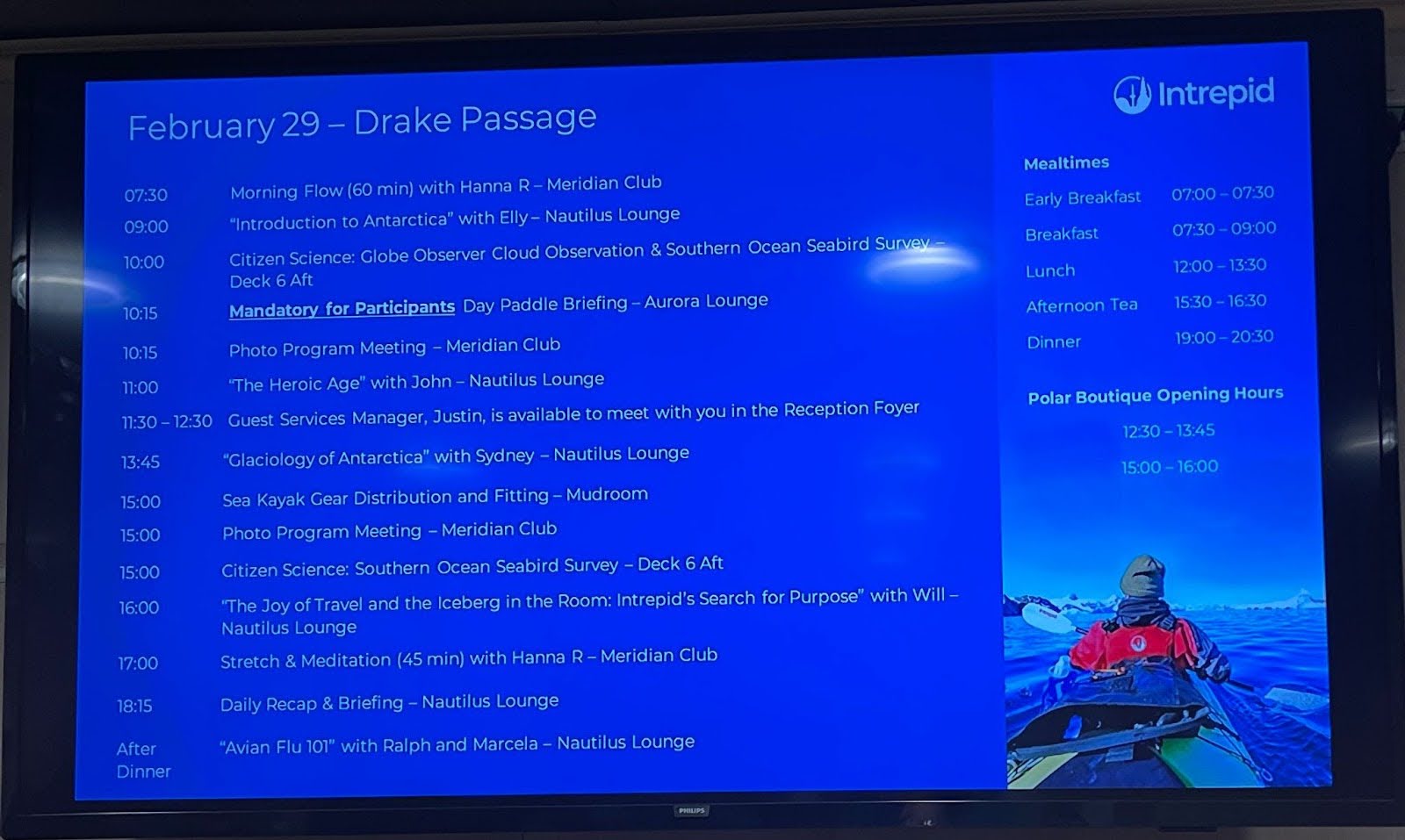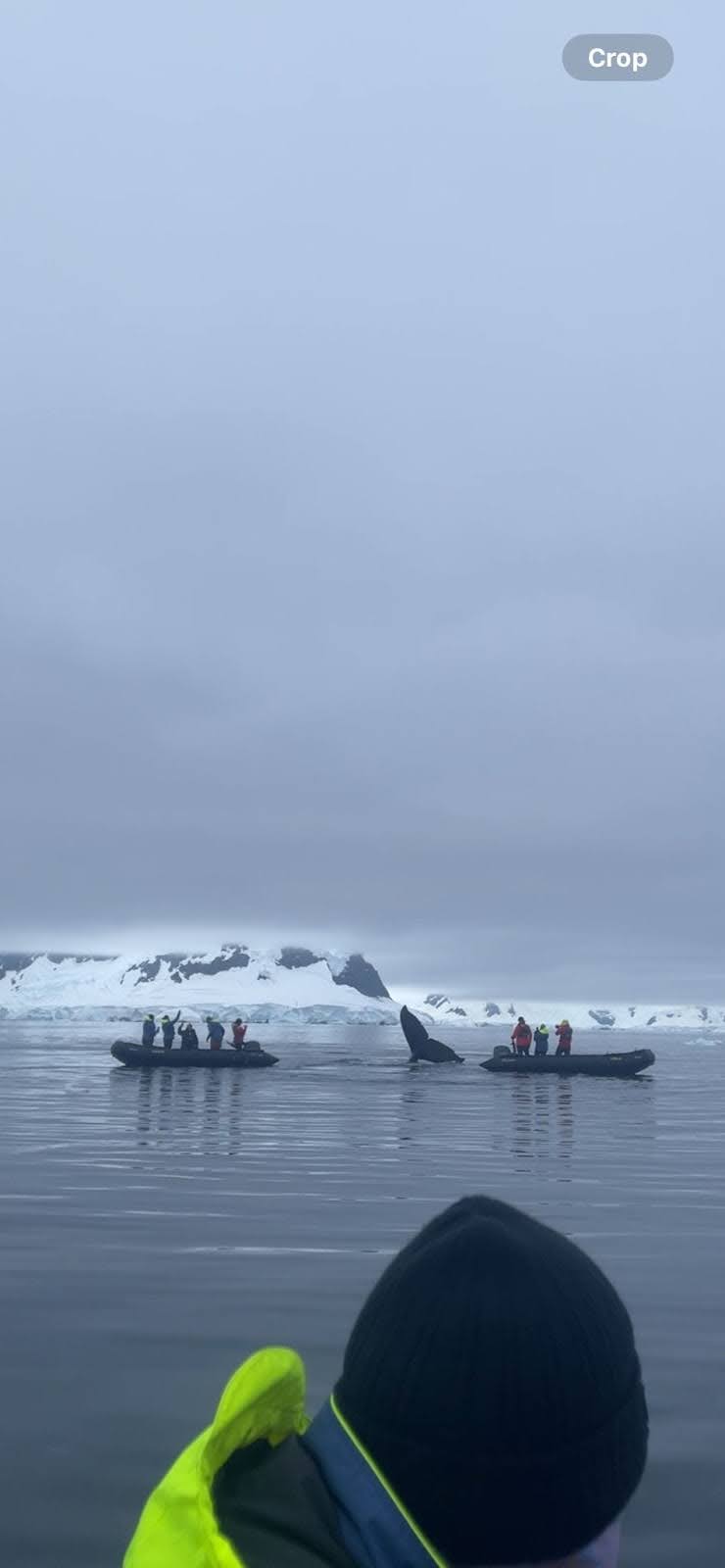In late February, I was able to take an expedition to Antarctica with Intrepid Travel…

The Researchers of Antarctica
In late February, I was able to take an expedition to Antarctica with Intrepid Travel. I wrote about my journey in a previous blog. Here, I want to talk about the researchers that joined our ship, what they learned and shared with us.
Along with the 180+ guests were several scientists who conducted lectures and workshops on their research. Among them were the WWF on whales, The University of Tasmania on sustainable tourism, and experts specializing in bird flu and phytoplankton.
Most lectures were done during the travel days aka the Drake Passage and we learned some history of Antarctica, the wildlife and structure there, and then coming back to Ushuaia, the scientists were able to share some of their findings.
One talk was extra special: we were on the ship during International Women’s Day so one guide did a presentation on notable women who went to Antarctica. It was previously believed that Antarctica was no place for a woman. It took decades for women to be found acceptable as true explorers and scientists for the 7th continent. Some of these notable women include:
Ingrid Christensen was the first woman to see the continent and eventually the first to step on the mainland in the 1930s.
In 1946, Jackie Ronne and Jennie Darlington accompanied their husbands and other men to spend a year in Antarctica. A petition was even started to stop them from coming but it failed and they were allowed to join.
In the 1960s, Maria Klenova was the first female scientist to work in Antarctica. However, she was not allowed to step on the land so her male colleagues had to collect samples and bring them back on the ship for her to analyze.
In 1993, Ann Bancroft was the first woman to have explored both the north and south poles.
Today, we learned that 1/3 of the scientists concentrating in Antarctica are female and continue to grow. The crew on the Ocean Endeavor was over 40% female. As far as the passengers, it was over 50% female and mostly solo travelers (like me). Things have certainly changed since the beginning of the 20th century.
We concluded with a quote by Mary Odile Cahoon, one of the first American women to go in the winter to the continent in 1974, “If women are in science and science is in the Antarctic, then women belong there.”
I witnessed a baby humpback whale playing with the WWF boats. It was so close to them, showing its belly, fin, face, and did flips. I have a 6-minute video of it just being fascinated by the scientists and their boats. It was a sight to behold. One scientist shared that a highlight in her career was her brief eye-to-eye contact with the whale.
I spoke with Fernando, an Argentinian guide who worked for the Navy for many years and now teaches International Law specializing in Antarctica Law at the University of Buenos Aires. His passion is to educate others on how to preserve Antarctica and wants to do so through social media. Since I have worked in social media for over 10 years, I offered to advise him. We are working on a campaign, #ComeOnComeOnComeOn. The hope is that experts, tourists, and curious minds about Antarctica can use the hashtag to learn about what is going on with the white continent and how to help save it and the planet. So please check #ComeOnComeOnComeOn, you will definitely be seeing Fernando and me posting about it!
We also were told about the many ways we can help reduce climate change. If we commit to just one consistent way, it can go a long way. We can’t do everything but we can do something. In the end, I do not feel guilty for having gone to Antarctica. I try to make up for it in other ways. I walk or bike ride or take the train instead of a car to reduce my carbon footprint elsewhere. I try and eat a plant-based diet a few times a week. This graph is one of the resources that gives a few more ideas on how you can help. Try and pick one or two things that you can commit to: https://iaato.org/wp-content/uploads/2023/01/IAATO_Challenge_Card_A3-1.pdf
From the history lessons, the passengers and crew, people came from all over the world to visit and study one of the last wild places on the planet. The scientists requested that we share our experiences and how we can change things together, for the better. I hope you enjoyed reading and learned something. I encourage you to try and make a consistent change to help save the planet.
Here are some more resources:
IAATO is a member organization founded in 1991 to advocate and promote the practice of safe and environmentally responsible private-sector travel to the Antarctic. https://iaato.org/
Watch a short video I made of the WWF studying a baby whale here: https://www.youtube.com/watch?v=zeuwBNEixHE&t=27
A Reel from WWF about their expedition with us:
Fernando Tarapow, Antarctic Environmentalist’s Instagram: https://www.instagram.com/fernando_tarapow/
Don’t forget to check our social media campaign, #ComeOnComeOnComeOn






